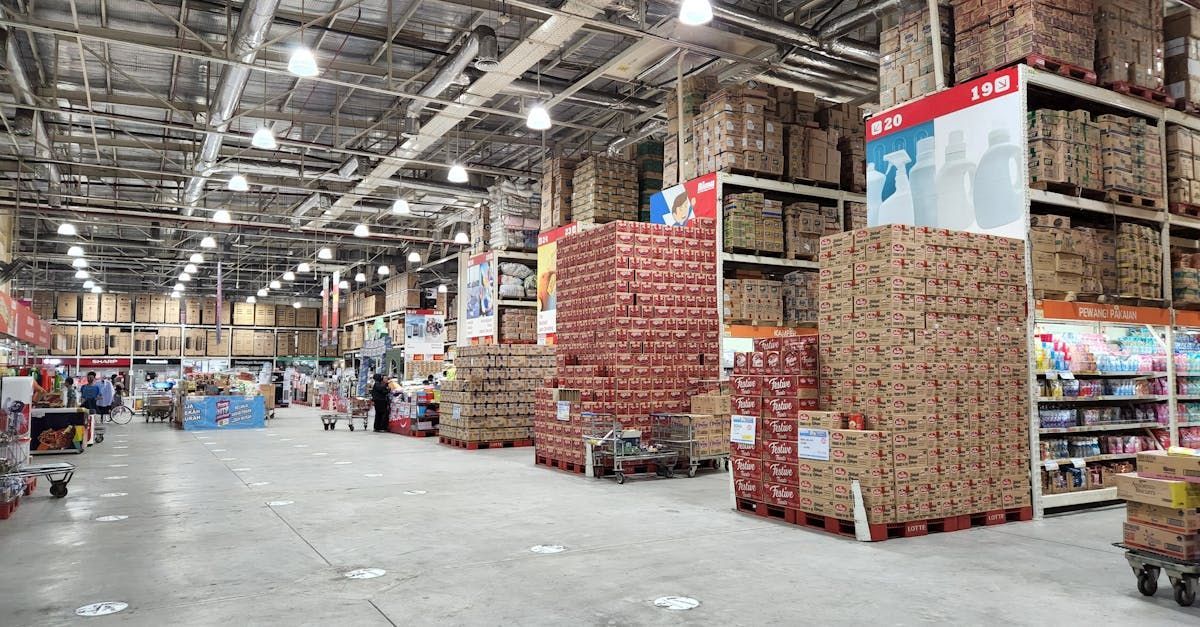Retail Revolution
Making the difference, supporting growth and improving your customers experience
Retail Revolution: Harnessing Insight to Thrive in a Changing Market
In the midst of one of the most transformative periods the retail sector has ever faced, the ability to truly understand both consumer behavior and market dynamics has never been more critical. The UK retail industry, valued at over £500 billion in 2024 and supporting 2.7 million jobs, is navigating a landscape shaped by shifting consumer expectations, the rapid rise of e-commerce, and ongoing economic uncertainty.
Retailers—whether national chains, independents, or online specialists—must adapt quickly to stay relevant, competitive, and profitable.
Why Insights Matter More Than Ever
Retailers today are contending with fluctuating sales volumes, changing spending habits, and pressure on margins. For example, while retail sales volumes fell by 2.7% in May 2025—the largest monthly drop since December 2023—there was still a 0.8% rise over the previous three months, reflecting the sector’s volatility and the need for agile, data-driven decision-making.
E-commerce now accounts for over a quarter of all retail sales, and consumer journeys are increasingly complex, spanning digital and physical touchpoints.
In this environment, robust insights are the foundation of success. Understanding what drives customer loyalty, how to optimize product ranges, and where to invest in technology or supply chain improvements enables retailers to respond proactively to market shifts. Insights also empower suppliers to tailor their offerings, anticipate trends, and forge stronger partnerships with retail clients.
Driving Growth and Innovation
Actionable market intelligence doesn’t just help retailers survive challenging periods—it unlocks new opportunities for growth. By listening to consumers, analyzing competitor strategies, and tracking emerging trends, businesses can refine their marketing, enhance customer experiences, and optimize operations for both efficiency and impact.
Whether it’s responding to the rise in value-driven shopping, capitalizing on seasonal surges, or innovating with sustainable practices, those who invest in insight are best positioned to lead the retail revolution.
We support everyone associated with the retail industry—from front-line stores and e-commerce platforms to suppliers and service providers—by delivering the insights and guidance needed to navigate today’s complex market with confidence and clarity
Knowledgeable in how to get you the information you need
Competitor Analysis
In the high-stakes, ever-evolving world of retail, competitor analysis is your secret weapon for staying ahead of the curve and capturing market share. In a landscape shaped by shifting consumer preferences, rapid technological advances, and relentless new entrants, relying on guesswork is a recipe for obsolescence. Retailers who invest in sharp, continuous competitor analysis gain the power to spot market gaps, anticipate trends, and make data-driven decisions that drive real results.
Why is competitor analysis so essential? It’s your window into what rivals are doing right—and where they’re missing the mark. By dissecting competitors’ product assortments, pricing strategies, customer sentiment, and marketing tactics, you can identify under-served segments, refine your offerings, and set prices that attract customers without sacrificing margins.
. This intelligence isn’t just about playing catch-up; it’s about leapfrogging the competition by innovating where others stagnate and delivering experiences that keep customers coming back.
The impact is tangible: retailers leveraging competitor data have seen increases in sales, higher customer retention, and dramatic improvements in operational efficiency and profitability.
Whether you’re a national chain or an independent boutique, competitor analysis empowers you to:
- Pinpoint market gaps and launch high-demand products before your rivals
- .
In the retail revolution, knowledge isn’t just power—it’s profit. Make competitor analysis the backbone of your strategy, and watch your business outpace, outsmart, and outperform the rest.
.
Enhance the customer experience by learning from competitors’ strengths and weaknesses
.
Optimise pricing and promotions in real time to win on value and perception
.
Drive innovation by tracking emerging tech, service trends, and consumer expectations
.
Reduce risk and future-proof your strategy by anticipating threats and market shifts
Retail - Case Studies
Just a brief view of some of the Research projects we have completed
List of Services
-
SPOKE WITH 5000 CHILDREN & THEIR PARENTSList Item 3
When a leading retailer specialising in children’s toys wanted to future-proof their product range and marketing strategy, they turned to us for answers straight from the source: the kids themselves.
Our mission was to dive deep into the hearts and minds of children in Key Stage 1 and 2, uncovering their honest opinions on toys, packaging, and the ever-changing world around them. But we didn’t stop there—we brought parents into the conversation as well, capturing a 360-degree view of what delights, inspires, and concerns both generations.
Over the course of the project, we engaged with 5,000 children and parents through a mix of creative research methods designed to spark genuine, insightful feedback. The result was a treasure trove of actionable insights: we revealed how children’s preferences are evolving with the rise of educational and tech-integrated toys, highlighted the growing demand for sustainable and eco-friendly packaging, and uncovered the subtle ways that social trends and digital experiences are reshaping playtime.
Parents shared their priorities too, from safety and value to the importance of toys that foster creativity and learning. Armed with this data, our client was able to confidently shape their marketing and product design strategies for the next two years—ensuring every new launch resonated with real needs and desires, not just industry assumptions. The impact? Smarter investments, faster product uptake, and a brand that truly connects with families in a rapidly evolving market.
-
ENGAGED WITH 1500 PEOPLE TO TALK ABOUT FURNITUREList Item 1
When a bold, up-and-coming furniture company set out to launch a new range, they knew that simply relying on instinct and internal creativity wouldn’t be enough to stand out in a crowded market. Determined to blend their own quirky design ideas with what real customers actually want, they partnered with us to conduct in-depth research with 1,500 people who had recently purchased furniture.
We used a mix of surveys, interviews, and interactive feedback sessions to get to the heart of what drives furniture purchases today. Participants shared their thoughts on everything from style preferences and color palettes to practical needs like durability, functionality, and ease of assembly. We explored how people shop—whether in-store or online—and what makes them choose one brand over another. The feedback was clear: while customers love unique, standout designs, they also value comfort, clear product information, transparent pricing, and a seamless shopping experience
-
INTERVIEWED 1300 RETAILERS TO ESTABLISH WHAT THEIR PURCHASING DRIVERS WEREList Item 4
When an international wholesaler wanted to break into new markets and ensure their products would be stocked by leading retailers, they recognised that understanding the purchasing drivers of their retail partners was absolutely critical. To dig deep into what truly influences stocking decisions, we conducted detailed interviews with 1,300 retailers spanning a range of sectors, store formats, and geographic regions.
Our conversations revealed a complex landscape of priorities and pressures. Retailers consistently highlighted the importance of reliable supply chains, flexible partnership terms, and transparent communication. They want wholesalers who can guarantee timely deliveries, offer adaptable payment and return policies, and provide clear, proactive updates about product availability and lead times.
Retailers also place significant value on product quality, competitive pricing, and strong brand support—they’re far more likely to stock items that come with marketing materials, staff training, and co-promotion opportunities
Another key driver is the ability to collaborate on inventory planning and demand forecasting. Retailers appreciate wholesalers who share market insights, sales data, and industry trends, enabling them to optimise stock levels and reduce the risk of overstock or stockouts.
Many retailers said that wholesalers who act as strategic partners—offering tailored product assortments, exclusive deals, and joint marketing campaigns—quickly become preferred suppliers
Our research also uncovered the growing importance of technology and data integration. Retailers are increasingly seeking partners who can provide seamless digital ordering, real-time inventory updates, and access to shared analytics, making the entire supply process more efficient and transparent
Armed with these insights, the wholesaler was able to refine their approach—streamlining logistics, introducing more flexible contract terms, and investing in digital tools to enhance collaboration. They tailored their product pitches to address the specific needs and aspirations of different retail segments and developed co-branded marketing initiatives to drive sell-through. As a result, the wholesaler saw a significant boost in retailer engagement, faster product uptake, and stronger, longer-lasting partnerships.
This case study demonstrates that by truly listening to retailers and understanding their purchasing drivers, wholesalers can move beyond transactional relationships to become valued, strategic partners—unlocking growth and resilience in an increasingly competitive retail landscape
-
GAINED OPINIONS FROM 10000 MEMBERS OF THE PUBLIC
When a major clothing brand wanted to truly understand what drives fashion choices and spending in today’s fast-moving market, they turned to large-scale, in-depth research—engaging with 10,000 members of the public across the UK. The goal was clear: to dig beneath the surface of style trends and brand preferences, uncovering the attitudes, motivations, and frustrations that shape how people shop for clothing and express themselves through fashion.
The research combined quantitative surveys with qualitative interviews and focus groups, ensuring a rich mix of data and personal stories. Participants were asked about their favorite styles and designs, the brands they love (and those they avoid), and what makes clothing purchases feel worthwhile—or disappointing. The study explored everything from price sensitivity and sustainable fashion choices to the emotional factors behind self-expression and identity. Respondents shared candid feedback on what they see as value for money, how they discover new brands (from social media to in-store experiences), and what turns them off—such as poor quality, lack of size inclusivity, or confusing returns policies
One key insight was the growing demand for authenticity and ethical practices: many consumers now seek brands that align with their values, whether that means sustainable materials, transparent supply chains, or inclusive marketing. Style preferences were also found to be highly individual, with a strong appetite for both classic staples and bold, statement pieces. Price remains a major consideration, but shoppers are increasingly willing to invest in garments that offer quality, durability, and a sense of personal connection.
Armed with this wealth of insight, the clothing brand was able to refine its product development, marketing, and customer experience strategies. They tailored new collections to reflect the styles and features most in demand, adjusted pricing and promotions to match consumer expectations, and revamped their messaging to speak more directly to customers’ values and aspirations. The result was a stronger brand identity, improved customer loyalty, and a measurable boost in sales and positive sentiment
This case illustrates the power of large-scale, mixed-method fashion research: by listening to thousands of real voices, brands can move beyond trends and assumptions to create clothing—and experiences—that truly resonate in a crowded and ever-evolving marketplace.
-
SPOKE WITH 200 PEOPLE FOR A LOCAL CAKE MAKER
When a local cake maker found themselves struggling to stand out in a saturated and highly competitive market, they realised that guessing what customers wanted was no longer enough. To get to the heart of what would make people choose their cakes over others, we engaged directly with 200 local residents—potential customers who could offer honest, actionable feedback.
Through a combination of interviews, surveys, and product tastings, we explored what people truly expect from a baker: from the flavors and designs that excite them, to the importance of freshness, ingredient quality, customisation, and even packaging.
Participants shared what would motivate them to spend their hard-earned money on baked goods, highlighting the value of unique offerings, memorable presentation, and a personal touch. Many respondents emphasized the importance of local sourcing and the appeal of seasonal or limited-edition products.
In addition to product preferences, we conducted branding opinion and testing sessions. Locals provided candid feedback on the baker’s existing logo, color palette, and overall brand identity. The results were clear: the original branding didn’t resonate or stand out on social media or at local markets. Based on this insight, the baker adopted a new, more vibrant color scheme and a modernized logo—instantly making their products more eye-catching and memorable.
Armed with these insights, the cake maker made strategic decisions to focus on a select range of products that best matched customer desires—such as signature celebration cakes and bespoke cupcakes—while also revamping their branding across all customer touchpoints. The impact was dramatic: within 12 months, the baker saw sales surge by over 200%, with new and returning customers drawn in by both the improved product selection and the fresh, appealing brand image.
This case highlights how even small-scale, targeted research can deliver powerful results. By listening closely to local voices and acting on their feedback, a struggling business can transform its fortunes—turning insight into a recipe for lasting success.
-
MYSTERY SHOPPING FOR A RETAIL CHAIN
When a national retail chain wanted to elevate its customer experience and ensure consistency across every touchpoint, they turned to a comprehensive mystery shopping program.
Our team conducted detailed evaluations both in-store and online, immersing ourselves in the full spectrum of the customer journey—from browsing and product selection to checkout and after-sales support.
Mystery shoppers visited each physical location undercover, assessing everything from staff friendliness and product knowledge to store cleanliness, merchandising, and adherence to brand standards.
Online, we evaluated website navigation, ease of purchase, responsiveness of digital support, and the overall efficiency of the e-commerce experience.
Each visit was meticulously documented in a full report, highlighting not only areas of excellence but also pain points and inconsistencies that could undermine customer satisfaction.
This approach provided the retail chain with an unbiased, real-world snapshot of how their stores and digital channels were performing, directly from the customer’s perspective
The actionable insights gathered were used to shape targeted improvements: refining staff training and development, optimising store layouts, and enhancing digital usability. By addressing the specific issues uncovered—such as slow service at peak times, unclear signage, or gaps in online support—the chain was able to deliver a more seamless, satisfying experience for every shopper.
Ultimately, the mystery shopping program became a catalyst for continuous improvement, helping the retailer boost customer loyalty, strengthen brand reputation, and maintain a competitive edge in a rapidly evolving market






